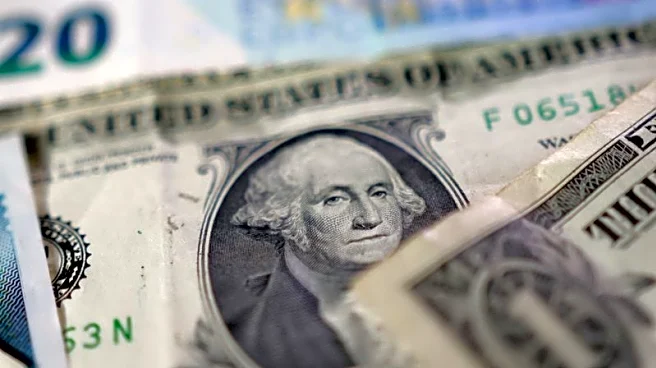What's Happening?
Gold prices have surged past $3,800 an ounce for the first time, driven by investor demand amid growing expectations of further interest rate cuts by the U.S. Federal Reserve. The weaker dollar has also contributed to the rise in gold prices. Spot gold gained 1.1% to reach $3,800.09 per ounce, while U.S. gold futures for December delivery increased by 0.6% to $3,830. This development comes as markets imply a high probability of the Federal Reserve cutting interest rates in October, which could continue to lower short-term bond yields.
Why It's Important?
The rise in gold prices reflects investor sentiment and expectations regarding the Federal Reserve's monetary policy. Interest rate cuts typically lead to lower yields on bonds, making gold a more attractive investment as it does not offer interest. This shift can impact various stakeholders, including investors and companies with significant gold holdings. Additionally, the weaker dollar enhances the appeal of gold as a safe-haven asset, potentially influencing global trade dynamics and investment strategies.
What's Next?
If the Federal Reserve proceeds with the anticipated rate cuts, it could further bolster gold prices and affect other financial markets. Investors and financial institutions may adjust their portfolios to capitalize on these changes, while businesses involved in gold trading and production could see increased activity. The broader economic implications of rate cuts, such as potential impacts on inflation and consumer spending, will be closely monitored by policymakers and economists.
Beyond the Headlines
The Federal Reserve's actions highlight the ongoing challenges in balancing economic growth with inflation control. The potential rate cuts underscore concerns about economic stability and the need for strategic monetary interventions. This situation may prompt discussions on the long-term sustainability of such policies and their effects on financial market volatility.











